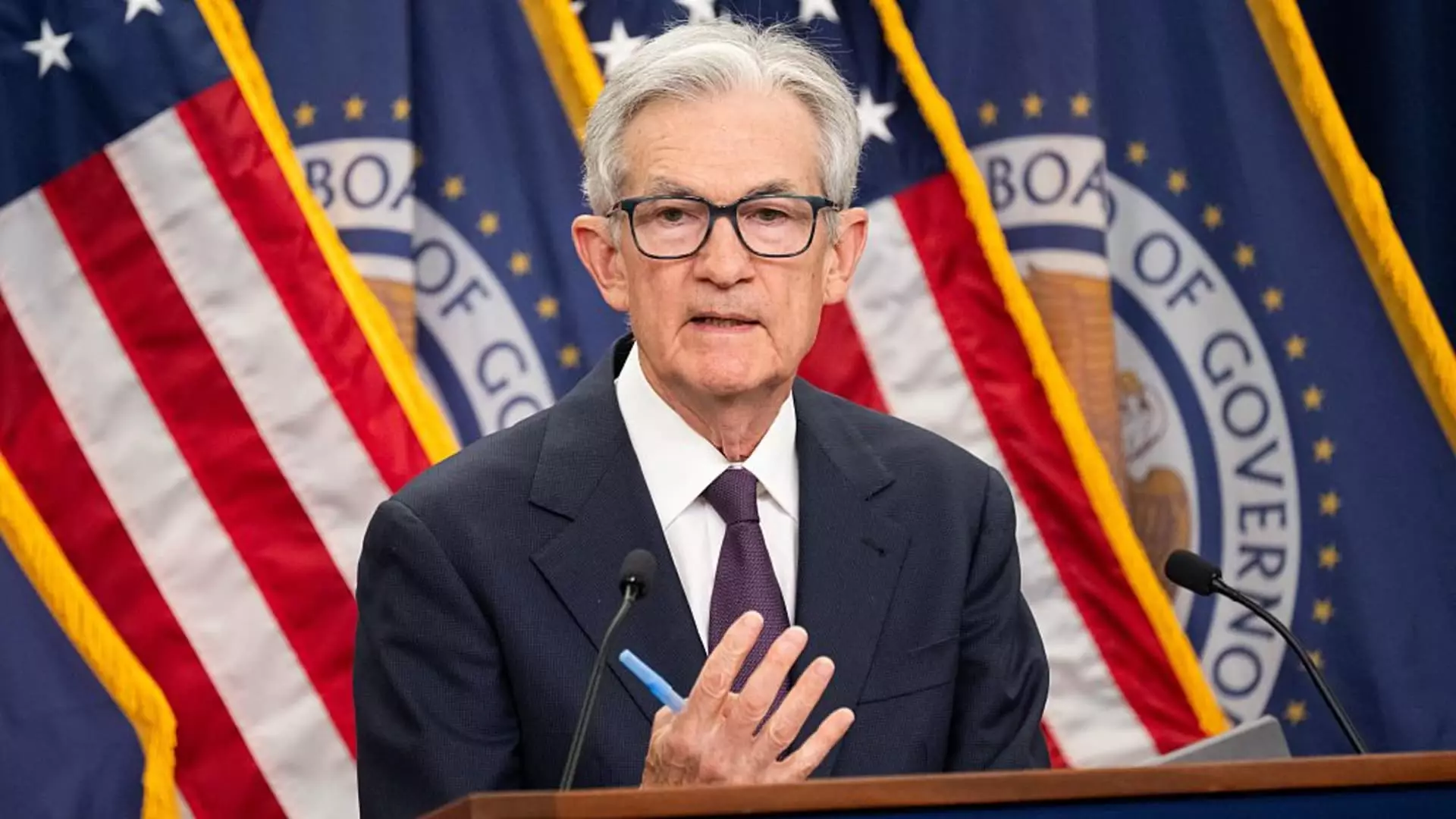Jerome Powell, the chair of the Federal Reserve, exemplifies the dual nature of economic leadership in times fraught with uncertainty. His latest remarks underscore the precarious balancing act the Fed must perform as it navigates the treacherous waters of inflation management and labor market strength. Powell’s commitment to an inflation target of 2% appears steadfast, yet the rising numbers hint at a dire forecast that could impact American households across the spectrum.
In a recent address, Powell indicated that inflation remains stubbornly above the Fed’s target. His pre-emptive caution regarding President Trump’s tariffs paints a picture of an economy grappling with increasing costs, fueled by external pressures. While the economy may appear “solid”—a term used liberally by Powell—there lies an underlying volatility that demands critical attention. The expectations of the future inflationary landscape hinge on the trajectory of these tariffs, echoing a sentiment of anxiety among economists and citizens alike.
Political Pressures Loom Large
The political ramifications of Powell’s commentary are just as significant as the economic implications. Trump’s vitriolic criticisms of Powell—calling him a “very dumb, hardheaded person”—ring alarm bells not just for Powell but for the independence of the Federal Reserve itself. This public feud reflects a concerning trend where political influence casts a long shadow over economic decision-making. The Fed must shield itself from external pressures to maintain its integrity and credibility; a task that appears increasingly daunting given the current climate.
When Powell asserts that the Federal Open Market Committee (FOMC) is “well-positioned to wait,” it suggests a cautious approach, but also a fearful one. The FOMC’s deliberations must wrestle with uncertainties that extend beyond mere numbers. The president’s public scorn for Powell raises the stakes, adding layers of complexity that economic leaders should ideally navigate free from political bias.
The Uncertainty of Tariffs and Their Impact
Powell’s acknowledgment that the impact of tariffs on inflation remains unclear serves as a crucial moment in this discourse. The traditional economic model suggests that tariffs result in immediate, albeit one-time price hikes rather than persistent inflation. However, this understanding of tariffs must be reevaluated in light of evolving trade relations and global economic dynamics. The situation calls for innovative economic thinking, yet Powell seems content with a retrospective approach that may well hinder progress.
Furthermore, the Fed’s reliance on data—as expressed in Powell’s comments—places significant weight on the accuracy and timeliness of economic indicators. While the consumer price index’s modest rise of just 0.1% in May provides some solace, the underlying pressures of corporate profit margins and consumer spending, which could reverse this trend, loom large. It’s essential to recognize that even slight alterations in inflation metrics can disrupt the delicate balance the Fed strives to achieve in maintaining full employment alongside price stability.
Future Projections: A Cause for Concern
The internal FOMC dynamics reveal a spectrum of opinions on future interest rate adjustments, reflecting a division that adds further complexities to Powell’s leadership. With only 23% probability anticipated for a rate cut in July, markets are already signaling a jittery disposition, looking ahead with bated breath. The upcoming “dot plot” projections from FOMC members will be crucial, revealing not just individual member perspectives but also the consensus—or lack thereof—on the Fed’s path forward.
Moreover, the optimistic expectation that the inflation data will stay in check to facilitate future cuts is a classic example of wishful thinking. Personal biases, divergent opinions, and political undercurrents infiltrate economic strategy, presenting both challenges and opportunities for the Fed’s governance of monetary policy. Will the Fed act decisively when called upon, or will it fall prey to the political maelstrom precipitated by tariff-induced uncertainty?
The Larger Implications for Americans
Ultimately, the implications of Powell’s remarks stretch far beyond economic calculations. They extend to the very fabric of American lives, affecting families grappling with the repercussions of price increases on necessities. The routine assurances of a “solid” labor market ring hollow in the face of tangible inflationary pressures that dilute purchasing power. For the average American, the Fed’s decisions—or indecisions—will undoubtedly shape the socio-economic landscape in ways that could spell significant challenges if not handled judiciously.
In such volatile times, the need for clarity, transparency, and bold decision-making from the Federal Reserve has never been more pronounced. The economic recovery, while evident, is teetering at the brink, and proactive measures must be employed to prevent a setback that could strain the very tenets of a stable economy. As this situation unfolds, the onus is on Powell and the FOMC to navigate wisely and without fear, for the stakes have never been higher.


Leave a Reply